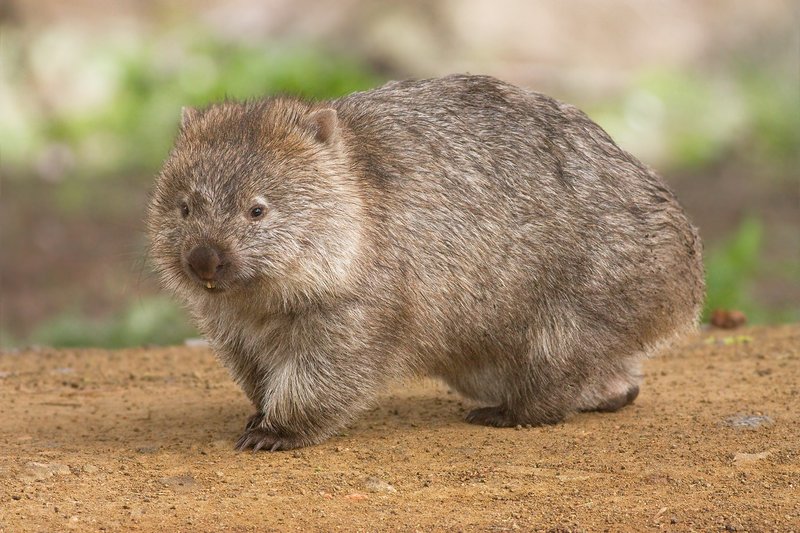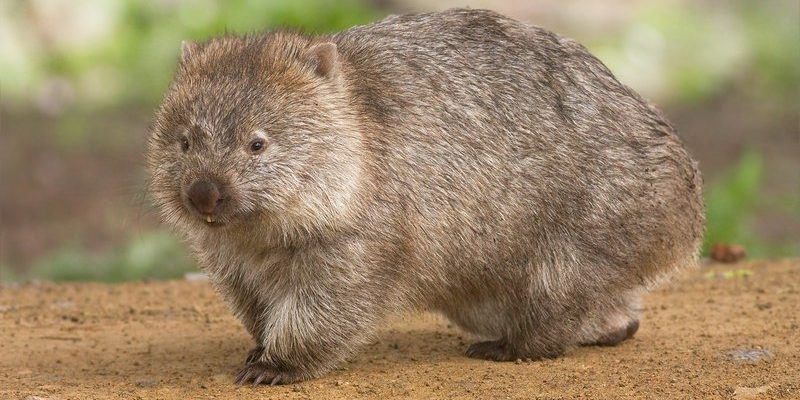
Wombats are nocturnal creatures, spending their days snoozing in their burrows and their nights exploring the bush. Their protective nature and nurturing behavior toward their young makes them quite endearing. Just imagine a little wombat joey snuggling in its mom’s pouch, experiencing all the wonders of the world for the first time. It’s a heartwarming scene, and there’s so much to uncover about how these adorable creatures ensure the survival of their young in the wild.
Wombat Reproduction: The Basics
Wombat reproduction starts with the female finding a mate. Typically, mating happens during the cooler months as spring approaches. After a gestation period of about **20-30 days**, the female wombat gives birth to a tiny, underdeveloped joey, which is about the size of a jellybean. Here’s where it gets interesting: the baby must crawl into its mother’s pouch immediately after birth.
Once inside, the joey latches onto a teat and continues to grow for several months in the safety of the pouch, snuggled close to its mother’s body warmth. During this stage, the mother is careful to protect her baby from potential threats, making sure it remains cozy and safe while it develops. You might be wondering, how does the mother manage everything while caring for her growing joey?
The Essential Role of the Pouch
The pouch is not just a cute feature; it’s essential for the survival of the joey. It’s fully lined with skin and hair that keep the joey safe and warm. As the joey grows, it stays in the pouch for about **6 months**. During this time, it receives all the nutrients it needs through its mother’s milk.
Interestingly, while the joey is still in the pouch, the mother wombat can return to her foraging routine at night. If she encounters danger, she can retreat back to her burrow, and the pouch acts as a safe haven. This setup ensures that the mother can keep feeding and caring for her joey while still living her life. Can you imagine the balance she has to maintain? It’s pretty incredible!
From Pouch to Independence
After about six months, the joey is ready to start exploring the outside world, but it won’t leave the pouch entirely just yet. The little one begins to peek its head out, getting curious about the surroundings. This gradual transition is vital; it allows the joey to acclimate to its environment without fully separating from its mother too soon.
Around the **8 to 12-month mark**, the joey will finally venture out and start nibbling on grass and plants. However, it will still return to the pouch for milk and comfort. This back-and-forth helps it to gain strength and learn crucial survival skills from its mother. Honestly, watching this transition must be like witnessing a gentle rite of passage for the little ones.
Mother’s Care and Protection
Mother wombats are incredibly dedicated caregivers. They teach their young important skills for survival, like foraging for food and recognizing dangers in their surroundings. Wombat mothers often take the time to guide their joeys by leading them to suitable grazing spots and helping them learn to dig.
Protection is another critical aspect of their relationship. If a threat arises, such as a predator, the mother wombat can quickly shield her joey by using her sturdy body to block it. This instinctual protective behavior ensures that the next generation has the best chance of survival. It’s essentially a crash course in life skills that every young wombat needs to thrive in the wild.
Social Structures and Sibling Dynamics
Interestingly, wombats are not particularly social animals. They tend to be solitary, but that doesn’t mean there isn’t interaction among siblings. If a mother wombat has more than one joey, they often have to compete for space and resources inside the pouch. While this may sound a bit harsh, it teaches the joeys to be resourceful and independent.
When they finally emerge from the pouch, sibling dynamics can vary. Sometimes, they may establish a mini-territory where they learn to assert themselves and find their footing in the world outside the pouch. Watching them develop these social skills helps prepare them for the more solitary life ahead, emphasizing the importance of independence and self-sufficiency as they grow.
Why Wombat Parenting Matters
The way wombats raise their young is more than just a cute story; it’s a crucial part of their survival as a species. Understanding their parenting habits can also provide insight into conservation efforts. Wombats face threats from habitat loss, climate change, and predators, and knowing how they breed and rear their young can help wildlife experts develop better protective measures.
When we appreciate their unique way of life, we foster a greater respect for these resilient creatures and the environments they inhabit. Wombats remind us of the delicate balance of nature, and how even the smallest creatures play a vital role in our ecosystems. Isn’t it beautiful to think about?
In conclusion, wombats raise their young in a truly captivating way. From cozy pouches to nurturing lessons, every aspect of their parenting style is geared towards survival and independence. It’s a heartening cycle of life that showcases the beauty of nature.
Whether you find wombats intriguing or just love learning about wildlife, their parenting can inspire us. The next time you think about these furry creatures, remember the incredible journey they undertake to ensure the survival of their little ones. Isn’t nature just astonishing?

